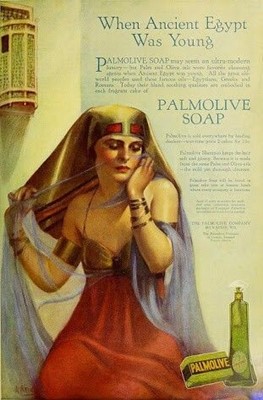"ADVERTISING MUST BE DONE SCIENTIFICALLY"
Claude C. Hopkins, during his time in advertising, applied advanced methods such as tracking the effectiveness of advertising campaigns and testing. In this article, we'll introduce the key methods and techniques described in his books, and show specific examples of campaigns he created - so what was the strategy behind the most successful campaigns for Schlitz Beer, for example, and others? We will reveal the ways in which he has enriched the rules of successful copywriting. In the conclusion of the article, we will also summarize what important takes we can apply to current advertising and marketing practice and how to use his ideas effectively for successful sales.
HE COULD HAVE BEEN A LAWYER, BUT HIS PASSION WAS THE BUSINESS WORLD
Claude C. Hopkins was a prominent American advertising creative, marketer and copywriter who was born in 1866 in Hillsdale, Michigan. After studying law, he decided to pursue advertising and entered the world of agencies. He worked his way up to a senior position at Lord & Thomas advertising and his talents helped the company to considerable success. During his career, Hopkins has created successful advertising campaigns for many companies including Bissell Carpet Sweeper, Goodyear Tire and Rubber Company, and Pepsodent Toothpaste. He is considered one of the pioneers in modern advertising, who sought to combine creative elements with scientific methods and data to create effective advertising campaigns. His approach to advertising has become the basis for many of today's marketing techniques and strategies.
HOW TO MAKE A GOOD COPY? TEST AND CALL TO ACTION!
Hopkins is rightly considered one of the most influential copywriters in history. His writing is the subject of his work My Life in Advertising. Many of the copywriting techniques described here are timeless and effective to this day. One of his key methods was the use of facts and evidence. Hopkins believed that if you provide customers with enough persuasive arguments, relevant facts and statistics, they are more likely to eventually make a buying decision. Let's look at some specific examples of practices that have influenced the way marketing strategies are shaped today:
- CATCHY HEADLINE: According to Hopkins, a headline must be strong and immediately grab the reader's attention. The language should be simple, easy to understand and have the ability to reach as many people as possible.
- SALES ARGUMENT: Thoroughly thought out, addresses the needs and attacks the customer's desires. This is how it should be. In short, explain to the customer why they should buy the product or service and what it will do for them.
- CALL TO ACTION: If your headline catches the reader's eye, you still haven't won. If they don't read on, they will lose interest and soon forget about you. Hopkins advised to challenge the potential consumer to take action as soon as possible - offer them a coupon or sample of which they were a big fan, for example. The CTA, or call to action, is now an absolute standard and no good campaign can do without a call to action.
- TESTING, TESTING, TESTING: The customer's needs need to be met - and you might get a hit if you guess. However, the only reliable way is to test and monitor so that you don't guess but KNOW what to focus on and what to avoid.
In his book Scientific Advertising, in which he presented and defined the basic principles of effective advertising, these other patterns emerged:
- You are addressing a specific customer directly.
- Try to target a specific audience.
- Highlight the benefits your product brings.
- Think about keeping your customers loyal and keeping your brand credibility for the long run.
THE MOST SUCCESSFUL CAMPAIGNS OF THE FOUNDER OF MODERN ADVERTISING
Schlitz Beer – purity above all
Hopkins' collaboration with Schlitz Beer had some very interesting results. Claude C. Hopkins joined the brewery in 1907 and created highly successful advertising campaigns to showcase the beer-making process. And it succeeded. Thanks to his ads, beer sales increased by a staggering 600%.

Hopkins chose the path of simplicity in his campaign for Schlitz beer. He simply explained the brand's motto which was "clean beer". He just took the attributes of the competitive advantage - clean and maintained environment, twice daily pipe cleaning, quadruple bottle sterilization, etc. He thus described seemingly ordinary and uninteresting facts. Of course, he did not mention that other breweries had similar standards - he was simply the first one to think of using it as a sales strategy.
Pepsodent - How one man taught the whole world to brush its teeth
One day, a friend approached Hopkins with an offer to work with him. He wanted him to create a commercial for his new, fresh toothpaste, Pepsodent. Hopkins didn't want to do it, however, because the business of toothbrushing products was a certain commercial suicide. Despite the fact that a significant portion of the population suffered from dental problems, people weren't buying the toothpaste and overall oral hygiene was in significant decline. In the end, however, the decision to take advertising under his wing proved to be one of the wisest of his life. Hopkins turned Pepsodent into a superstar almost overnight. A decade later, surveys showed that the campaign had made brushing teeth a daily ritual for more than half of the American population. The figure jumped from 7% to 65%. Pepsodent was the best-selling toothpaste for more than 30 years, and trillions of dollars were made in ads. Even many years later, the creators of TV commercials for the Pepsodent brand continued to build on this idea.
The tactic for the Pepsodent campaign was that Hopkins researched and studied the issue to find an argument that would motivate consumers to use the product daily. He built it ultimately on the sales argument of attractiveness - get rid of unpleasant plaque and you'll be liked. How simple - that's what we all want.
Quaker Oats - Or how to convince men that oat flakes are better than a piece of meat
Another example of a brilliantly targeted campaign with sales arguments that hit the bullseye was the Quaker Oats cereal campaign. Once again, Claude C. Hopkins stuck to a functional model and offered the customer a compelling enough reason to incorporate this product into their daily routine. If you eat these oat flakes for breakfast every day, you will have enough energy for the day. You will be energetic and successful. But you really have to eat them every day! Otherwise it won't work...

The slogan "Shot from Guns" described the process of making Quaker Oats, where the oats were cooked under intense pressure, as if they were shot out of a cannon, which was energetic enough. This slogan was then used in other advertisements for the cereal.
Do you know Palmolive? It's Mr. Hopkins' fault
Rather than the fear factor, Hopkins wanted to use motivation in the form of the hope of an improved quality of life as his sales strategy. When he was approached by the Palmolive soap company, he again went scientific and did his research. He found that what most women hope for and what is in demand in this market segment is BEAUTY. So he decided to offer women a product that will improve the quality of their skin. He was inspired by the figure of the beautiful Cleopatra, who, according to sources, used olive oil to take care of her body. The advertisement was built on the marketing concept of "impulse selling" and a promise.

Hopkins helped the Palmolive brand rise to prominence with slogans such as "Give me a week and I'll give you new skin" and "Palmolive - the beauty of healthy skin". The Palmolive brand and its products still hold a permanent place in the market today.
ADVERTISING AS A DREAM FACTORY
Claude C. Hopkins is rightly regarded as the father of modern advertising. He based his methods on facts, data and customer insight. In fact, that's what marketers still do today. As a result, he was one of the first to take a very scientific approach to advertising, and inspired other creatives to build on hard numbers instead of guesswork - to do their research, test different versions, and keep a close eye on the behavior of their target audience. We already know that measuring, tracking and optimising performance in advertising campaigns is a crucial measure of their success. Hopkins argued that successful advertising must be based on the consumer's belief that the product will fulfil a need or desire or solve a problem. He recognized that emotions and desires lead consumers to make decisions that may not always be rational. Other methods he brought to the world of advertising that still work today are: bringing relevant information and transparency or highlighting the disadvantages of not having the product in your arsenal - a sort of precursor to FoMO (Fear of Missing Out). It is safe to say that Hopkins was ahead of his time and his legacy is still an inspiration in the marketing world.


